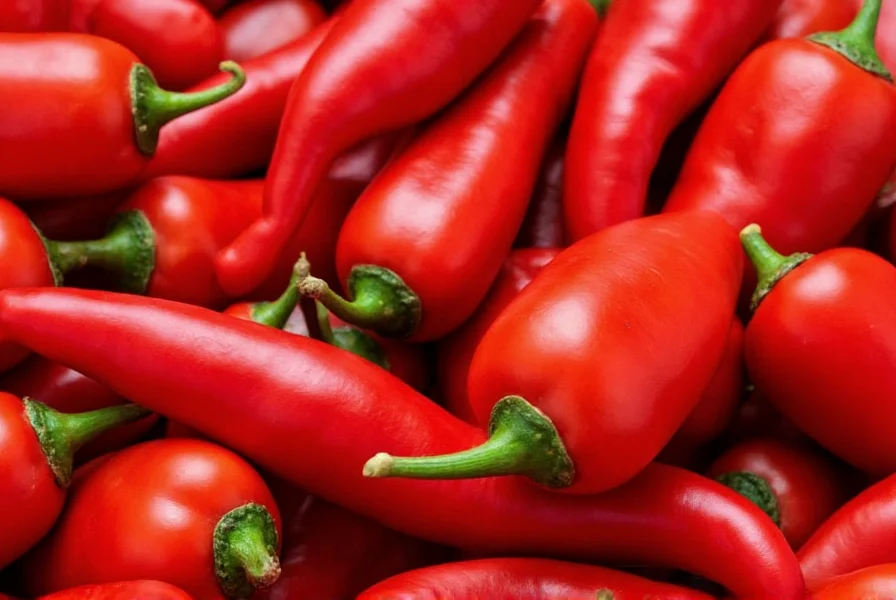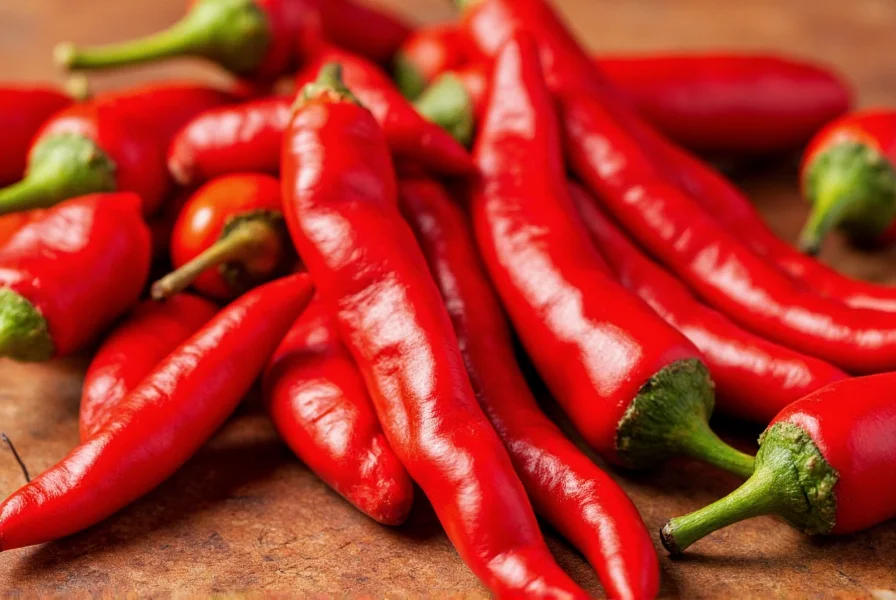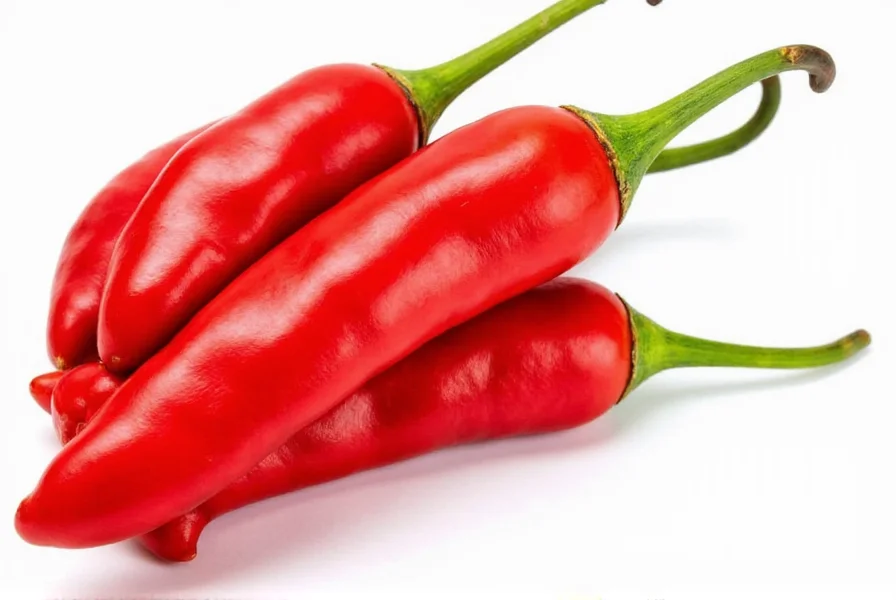Cayenne pepper (Capsicum annuum), a fiery member of the nightshade family, has been used for centuries in traditional medicine systems worldwide. Modern research continues to validate many of its purported health benefits, particularly those attributed to capsaicin—the compound responsible for its heat. This article examines the scientifically documented health effects of cayenne pepper, separating evidence-based benefits from popular claims.
Understanding Capsaicin: The Power Behind Cayenne Pepper
Capsaicin constitutes approximately 0.1% to 1% of dried cayenne pepper by weight and interacts with TRPV1 receptors in the body, which are responsible for sensing heat and pain. This interaction triggers several physiological responses that form the basis for cayenne pepper's health effects. Unlike many herbal remedies with limited research, capsaicin has been extensively studied in clinical settings, particularly for topical applications.

Scientifically Supported Health Benefits of Cayenne Pepper
Multiple peer-reviewed studies have investigated cayenne pepper's effects on human health. The following benefits have the strongest scientific backing:
| Health Benefit | Scientific Evidence | Recommended Consumption |
|---|---|---|
| Pain Relief | Topical capsaicin creams (0.025%-0.1%) show significant reduction in neuropathic pain (Journal of Clinical Psychiatry, 2020). Oral consumption may trigger endorphin release for temporary pain relief. | Topical creams as directed; culinary use (1/4-1/2 tsp daily) |
| Metabolic Support | Studies indicate capsaicin may increase energy expenditure by 50-100 calories daily and modestly improve fat oxidation (American Journal of Clinical Nutrition). Effects are temporary. | 1/4 tsp with meals; effects diminish with regular use |
| Cardiovascular Health | Research shows capsaicin may improve blood vessel function and reduce LDL oxidation (Journal of Agricultural and Food Chemistry). Population studies link chili consumption with lower cardiovascular mortality. | Regular culinary use (3-4 times weekly) |
| Digestive Support | Traditional use supported by evidence showing capsaicin may stimulate digestive enzyme production and protect against stomach ulcers by increasing mucosal defense (World Journal of Gastroenterology). | Small amounts before meals (1/8-1/4 tsp) |
Cayenne Pepper and Inflammation
Chronic inflammation underlies many modern diseases, and cayenne pepper shows promise as a natural anti-inflammatory agent. Capsaicin works through multiple pathways to reduce inflammatory markers. A 2022 review in Nutrients analyzed 15 clinical trials and found that regular capsaicin consumption significantly reduced C-reactive protein levels, a key inflammation marker, particularly in individuals with metabolic syndrome. However, the anti-inflammatory effects appear dose-dependent, with optimal results at moderate culinary doses rather than high supplemental doses.
Practical Applications for Health Benefits
To experience cayenne pepper's health benefits without adverse effects, consider these evidence-based approaches:
- For metabolic support: Add 1/4 teaspoon to morning smoothies or oatmeal. Effects are most pronounced when consumed consistently for 4-6 weeks, though tolerance may develop.
- For digestive health: Consume small amounts (1/8 teaspoon) 15 minutes before meals to stimulate digestive enzymes without irritating the stomach lining.
- For circulation: Incorporate into cooking 3-4 times weekly. Traditional preparations like cayenne tea (1/4 tsp in warm water with lemon) may provide temporary circulatory benefits.
- Topical pain relief: Use FDA-approved capsaicin creams (0.025%-0.1%) for localized pain, following package instructions. Oral consumption doesn't provide the same targeted pain relief.

Potential Side Effects and Considerations
While generally safe when consumed in culinary amounts, cayenne pepper may cause adverse effects in some individuals:
- Digestive discomfort: Heartburn, stomach pain, or diarrhea may occur, especially with high doses or in sensitive individuals
- Skin irritation: Direct contact with capsaicin can cause burning sensations; always wash hands after handling
- Medication interactions: May enhance effects of blood thinners and blood pressure medications
- Respiratory effects: Inhaling powdered cayenne can cause temporary breathing difficulties
Individuals with gastrointestinal conditions like ulcers, IBS, or GERD should consult healthcare providers before regular consumption. Pregnant women should limit intake to culinary amounts as high doses haven't been sufficiently studied.
Evidence vs. Popular Claims
While cayenne pepper offers genuine health benefits, some popular claims lack strong scientific support:
- "Cayenne pepper flushes toxins": No scientific evidence supports this detoxification claim; the body has its own efficient detoxification systems
- "Cures arthritis": While it may provide temporary pain relief, it doesn't address underlying causes of arthritis
- "Dramatically boosts weight loss": Effects on metabolism are modest and temporary; not a weight loss solution
- "Prevents cancer": Some laboratory studies show anti-cancer properties, but human evidence is lacking for prevention or treatment
How Much Cayenne Pepper Should You Consume?
There's no established daily requirement for cayenne pepper. Culinary use typically ranges from 1/8 to 1/2 teaspoon daily. Most research on health benefits uses doses equivalent to 30-130mg of capsaicin, which translates to approximately 1/4 to 1 teaspoon of cayenne pepper powder. Start with small amounts (1/8 teaspoon) and gradually increase as tolerated. Consistency matters more than high doses—regular moderate consumption provides more sustained benefits than occasional large doses.
Conclusion: A Valuable Addition to a Healthy Diet
Cayenne pepper offers several evidence-supported health benefits when consumed as part of a balanced diet. Its capsaicin content provides temporary pain relief, modest metabolic support, and potential cardiovascular benefits. While not a miracle cure, regular culinary use can contribute to overall wellness. As with any dietary component, moderation is key—cayenne pepper works best as part of a diverse, nutrient-rich diet rather than as a standalone remedy. Always consult healthcare providers before using cayenne pepper therapeutically, especially if you have underlying health conditions or take medications.
Frequently Asked Questions
Does cayenne pepper really boost metabolism?
Yes, but the effect is modest and temporary. Research shows cayenne pepper can increase energy expenditure by approximately 50-100 calories per day through thermogenesis. However, this effect typically diminishes after several weeks of regular consumption as the body develops tolerance. The metabolic boost alone won't produce significant weight loss but may complement other healthy lifestyle choices.
Can cayenne pepper help with arthritis pain?
Topical capsaicin creams (containing 0.025%-0.1% capsaicin) have been shown to provide temporary relief for osteoarthritis and neuropathic pain by depleting substance P, a pain neurotransmitter. Oral consumption of cayenne pepper doesn't provide the same targeted pain relief. For arthritis management, consult your healthcare provider about appropriate topical treatments rather than relying solely on dietary cayenne.
How much cayenne pepper should I take daily for health benefits?
For general health benefits, 1/4 to 1/2 teaspoon of cayenne pepper powder daily in culinary applications is sufficient. Start with smaller amounts (1/8 teaspoon) if you're not accustomed to spicy foods and gradually increase as tolerated. There's no benefit to consuming extremely high doses, which may cause digestive discomfort. Consistency matters more than quantity—regular moderate consumption provides more sustained benefits than occasional large doses.
Can cayenne pepper interact with medications?
Yes, cayenne pepper may interact with certain medications. It can enhance the effects of blood thinners like warfarin, potentially increasing bleeding risk. It may also amplify the effects of blood pressure medications, leading to excessively low blood pressure. If you take medications for diabetes, cayenne might affect blood sugar control. Always consult your healthcare provider before significantly increasing cayenne consumption if you're taking prescription medications.
Is cayenne pepper safe for people with stomach ulcers?
Contrary to popular belief, moderate cayenne pepper consumption may actually protect against stomach ulcers by stimulating mucus production that shields the stomach lining. However, during active ulcer flare-ups, spicy foods including cayenne may cause discomfort. If you have a history of ulcers, start with very small amounts (1/16 teaspoon) and monitor your body's response. Consult your gastroenterologist for personalized advice regarding spicy foods and ulcer management.











 浙公网安备
33010002000092号
浙公网安备
33010002000092号 浙B2-20120091-4
浙B2-20120091-4